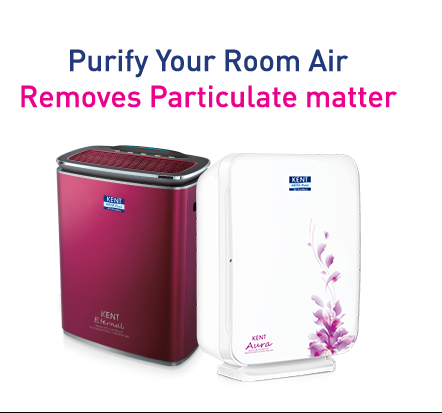Formaldehyde- a Lesser Known Source of Indoor Air Pollution
One of the main sources of indoor air pollution, formaldehyde is present in the everyday products that we use. The infographic gives detailed information about the various products that have formaldehyde, its effect on your health, and how to remove it.
What is Formaldehyde?
Formaldehyde is a colorless, strong-smelling gas that is commonly used in the production of many everyday products. It is a simple organic compound consisting of one carbon atom, two hydrogen atoms, and one oxygen atom, with the chemical formula CH2O.
Formaldehyde is widely used in the manufacturing of building materials, such as plywood, particleboard, and fiberboard, and in the production of plastics, fabrics, and paper products. It is also used as a preservative in medical laboratories, mortuaries, and in some household products, such as glues, adhesives, and cleaning agents.
Formaldehyde can be released into the air from these products, and exposure to high levels of formaldehyde can cause irritation of the eyes, nose, throat, and skin. In some cases, exposure to formaldehyde can cause more severe health effects, such as asthma, headaches, and even cancer.
To reduce exposure to formaldehyde, it is recommended to use products that emit lower levels of the chemical, increase ventilation in indoor spaces, and avoid smoking or using other tobacco products indoors. The use of air purifiers with activated carbon filters can also help to remove formaldehyde from indoor air.
You can read more about Air Pollution – https://www.kent.co.in/blog/what-will-happen-if-the-level-of-air-pollution-continues-to-increase/
Health Effects of Formaldehyde
Formaldehyde can have negative health effects, particularly if exposure is prolonged or the levels of formaldehyde are high. Here are some of the potential health effects associated with formaldehyde exposure:
1. Eye, nose, and throat irritation: Exposure to formaldehyde can cause irritation of the eyes, nose, and throat, leading to symptoms such as redness, itching, and burning.
2. Respiratory problems: Formaldehyde can cause respiratory problems such as coughing, wheezing, and shortness of breath, particularly in people with asthma or other respiratory conditions.
3. Skin irritation: Formaldehyde can cause skin irritation, leading to symptoms such as itching, redness, and rash.
4. Headaches: Exposure to formaldehyde has been linked to headaches and other neurological symptoms, such as dizziness and fatigue.
5. Cancer: Long-term exposure to formaldehyde has been linked to an increased risk of cancer, particularly nasopharyngeal cancer and leukemia.
How To Reduce Formaldehyde Levels at Home?
There are several steps you can take to reduce formaldehyde levels in your home. Here are some suggestions:
- Increase ventilation: Proper ventilation can help reduce formaldehyde levels in the air. You can open windows and doors to increase air circulation, and use exhaust fans in kitchens and bathrooms to remove formaldehyde and other pollutants.
- Use an air purifier: An air purifier with a HEPA filter can help to remove formaldehyde and other indoor air pollutants from the air.
- Choose low-emitting products: When shopping for furniture, flooring, and other household products, choose products that emit lower levels of formaldehyde. Look for products labeled as low-VOC or formaldehyde-free.
- Keep indoor humidity low: High humidity levels can increase formaldehyde levels in the air. Use a dehumidifier to keep indoor humidity levels between 30 and 50 percent.
- Avoid smoking indoors: Tobacco smoke is a significant source of indoor air pollution, including formaldehyde. Avoid smoking indoors and encourage others to do the same.
- Test for formaldehyde: You can have your home tested for formaldehyde levels by a professional testing service. If levels are high, you can take steps to reduce exposure by following the suggestions above.
By taking these steps, you can significantly reduce formaldehyde levels in your home and create a healthier indoor environment.
To know more about indoor air pollution read our inside story.





